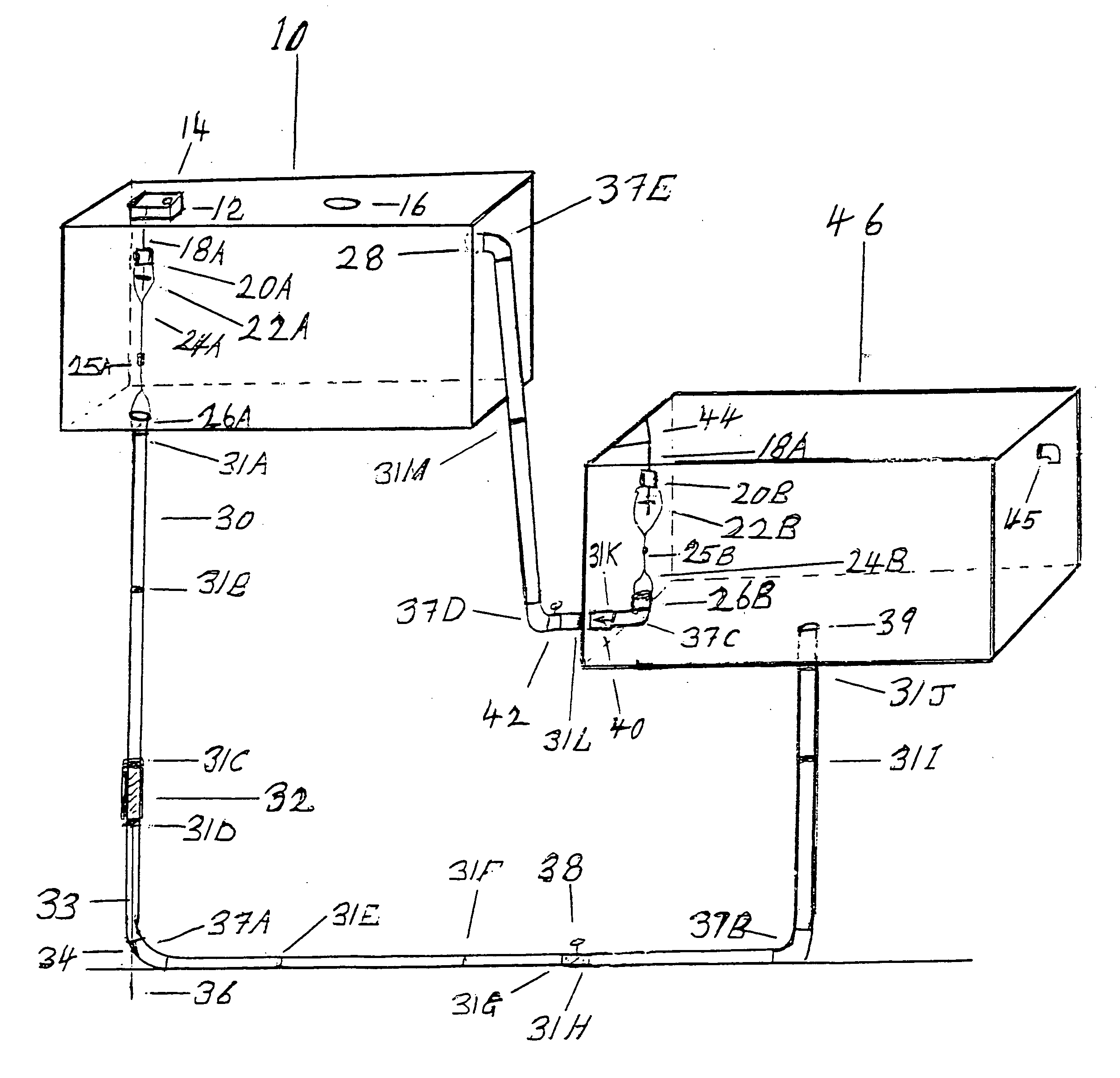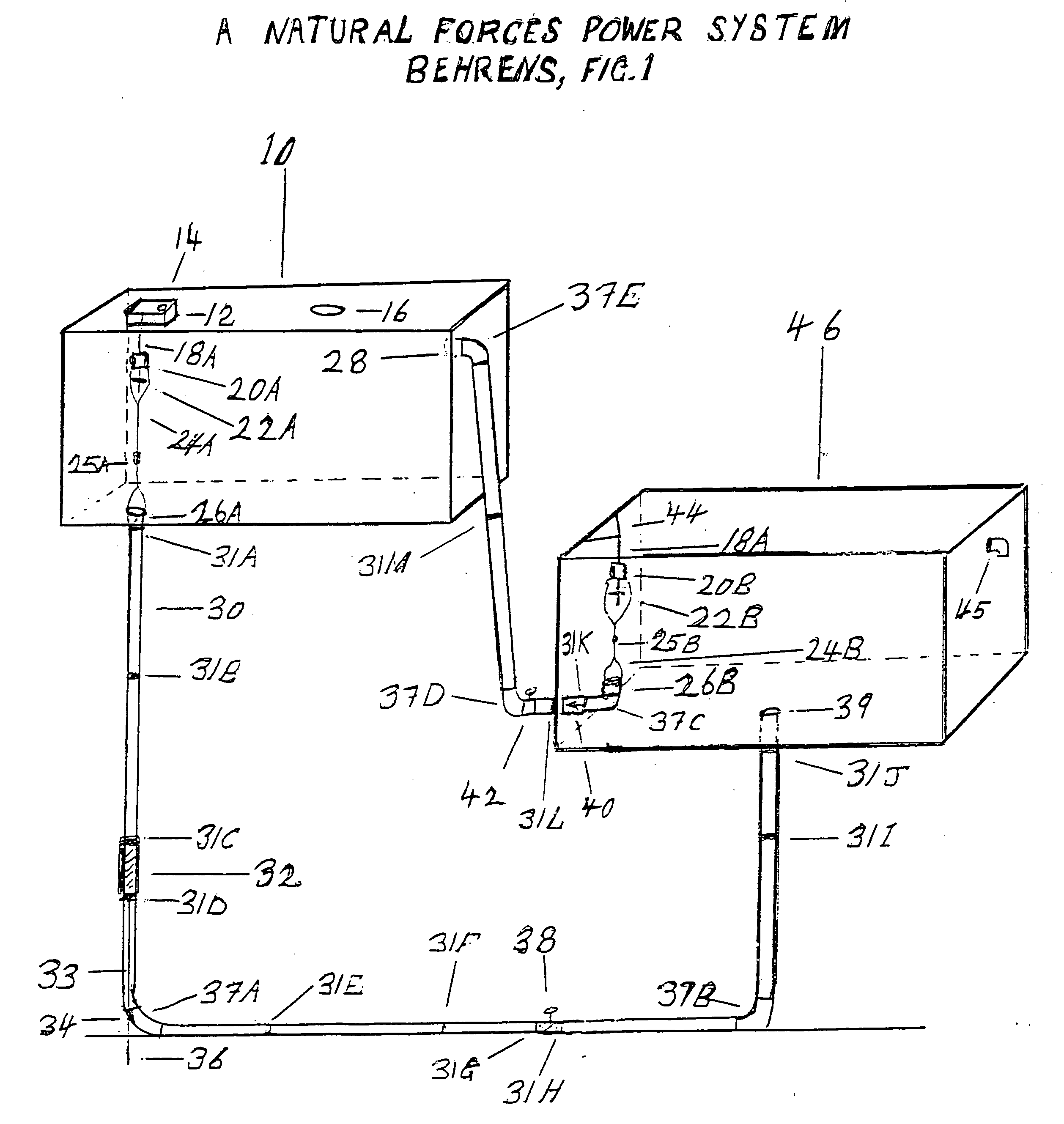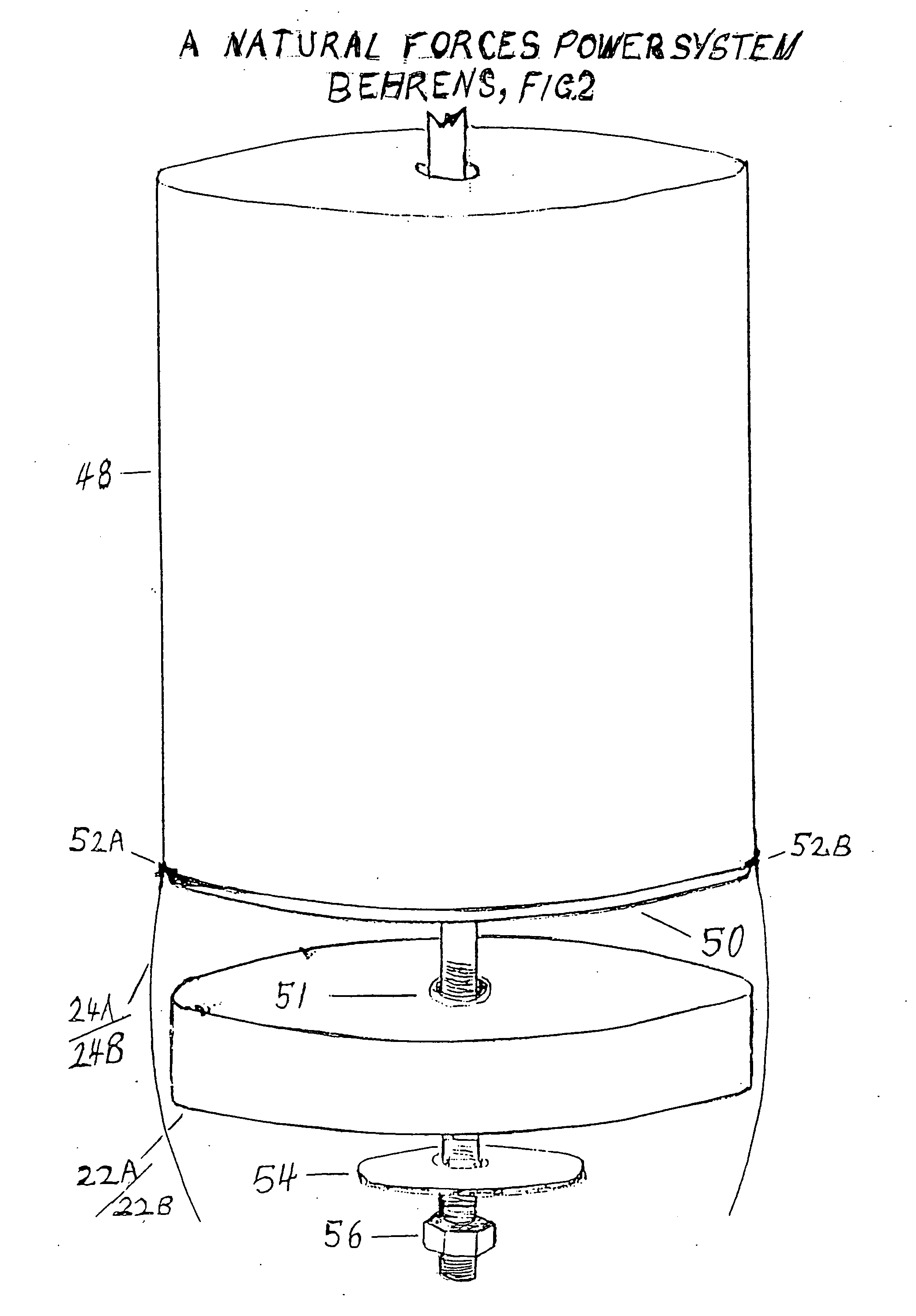Natural forces power system
a power system and natural forces technology, applied in the direction of engines, mechanical equipment, machines/engines, etc., can solve the problems of significant change in water's specific gravity, and achieve the effect of increasing power production and producing power economically
- Summary
- Abstract
- Description
- Claims
- Application Information
AI Technical Summary
Benefits of technology
Problems solved by technology
Method used
Image
Examples
Embodiment Construction
[0035] With tank 10's manhole cover secured, the system must first be filled with water. The initial filling procedures establish the residual two foot water level in tank 46 and purges out the air trapped between the water outlet valve 26B of tank 46 and the manual shut-off valve 42, which area encompasses the one-way check valve 40. Subsequent fillings for the purpose of topping off tank 10 need not be concerned with these one time initial requirements. The system is filled through its filler port 14. Please note that getting water up to the filler port is not within the scope of this invention and remains optional. First close the manual shut-off valves 38 and 42. Now fill tank 10 to overflowing. While tank 10 fills, the pipe leading from the manual shut-off valve 42 up into tank 10 also fills. Leave the filler port 14 open for one hour to dissipate any air, which may have entered the water through aeration. With the water still at the overflowing level gently screw in the filler...
PUM
 Login to View More
Login to View More Abstract
Description
Claims
Application Information
 Login to View More
Login to View More - R&D
- Intellectual Property
- Life Sciences
- Materials
- Tech Scout
- Unparalleled Data Quality
- Higher Quality Content
- 60% Fewer Hallucinations
Browse by: Latest US Patents, China's latest patents, Technical Efficacy Thesaurus, Application Domain, Technology Topic, Popular Technical Reports.
© 2025 PatSnap. All rights reserved.Legal|Privacy policy|Modern Slavery Act Transparency Statement|Sitemap|About US| Contact US: help@patsnap.com



